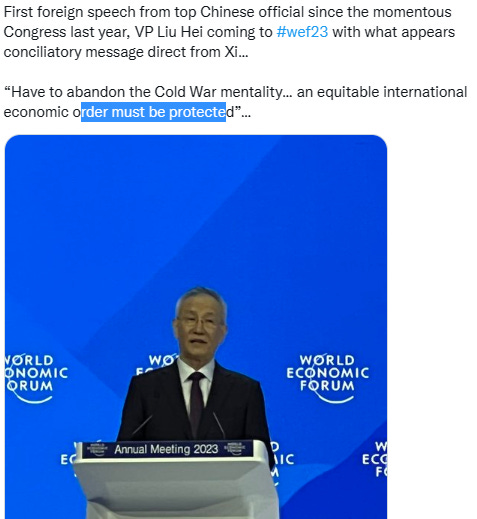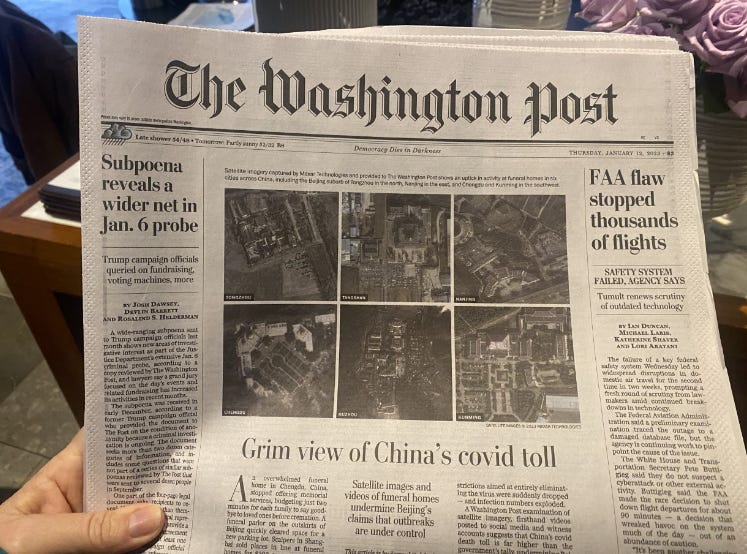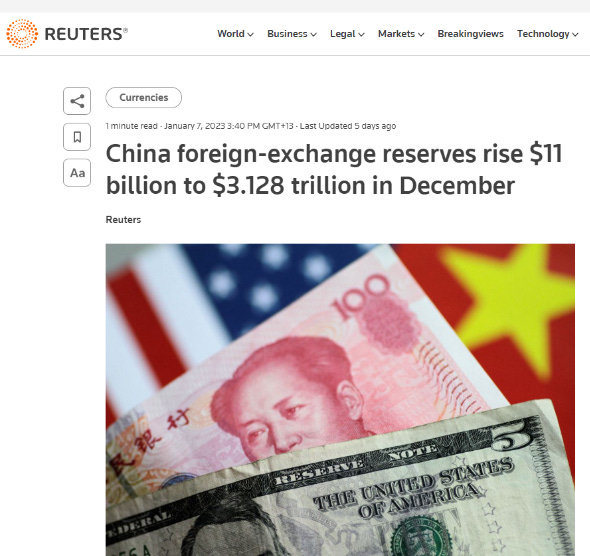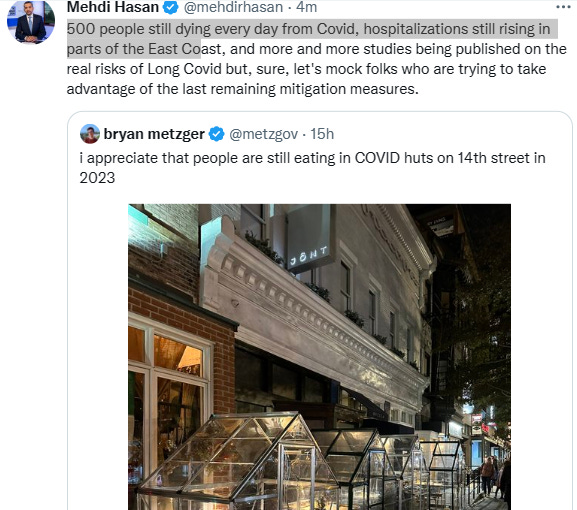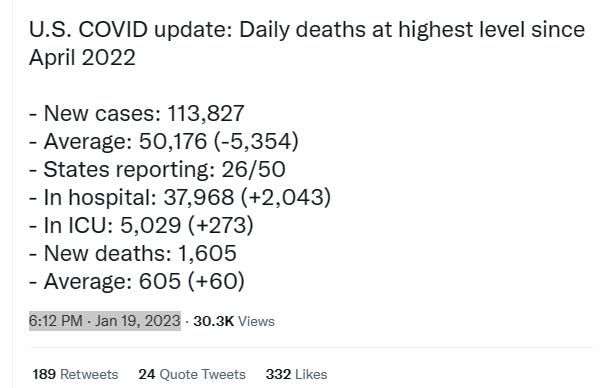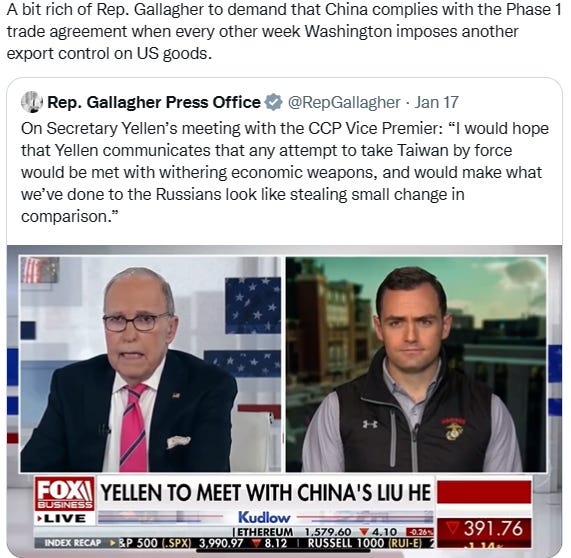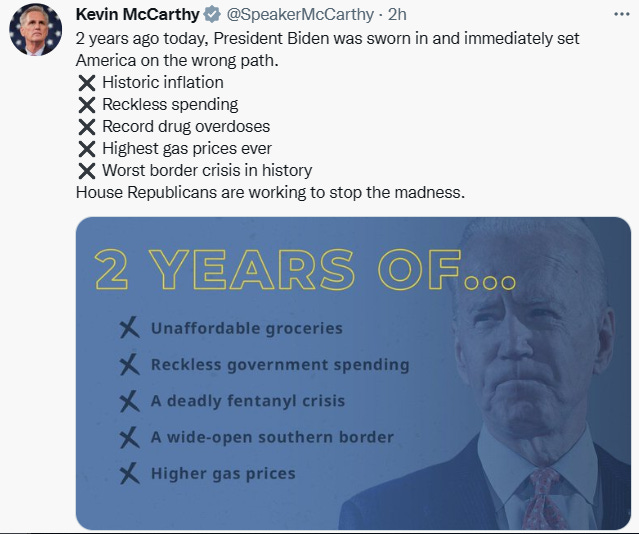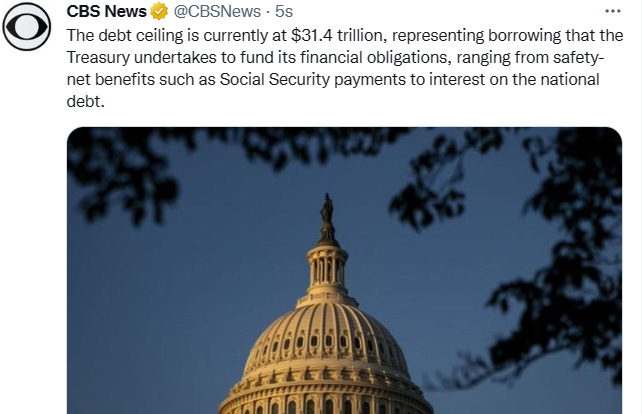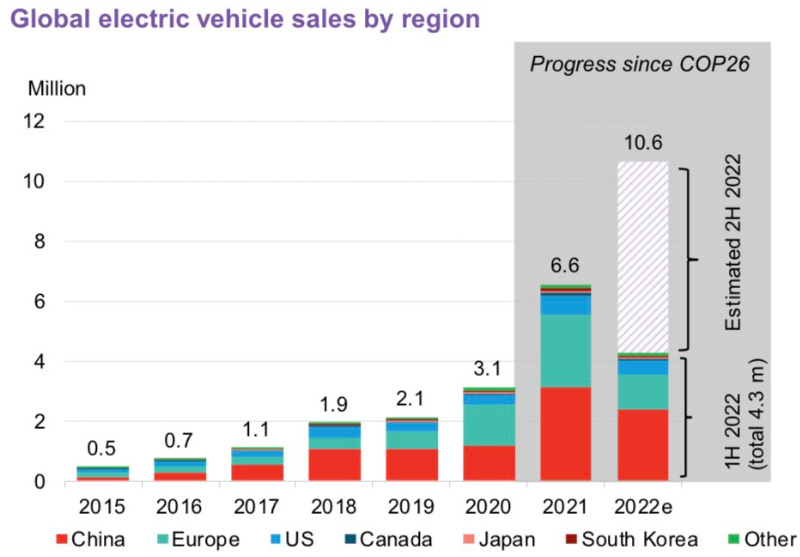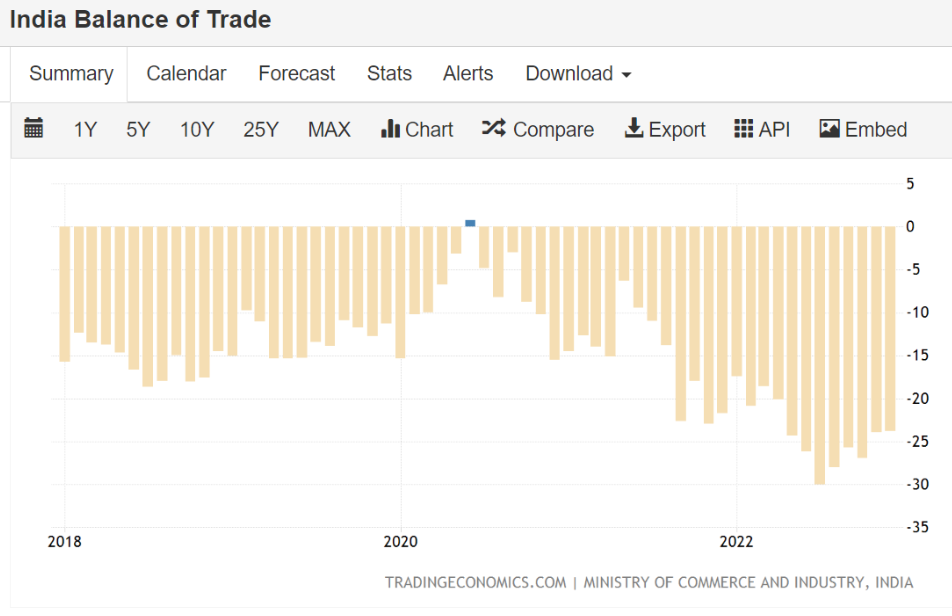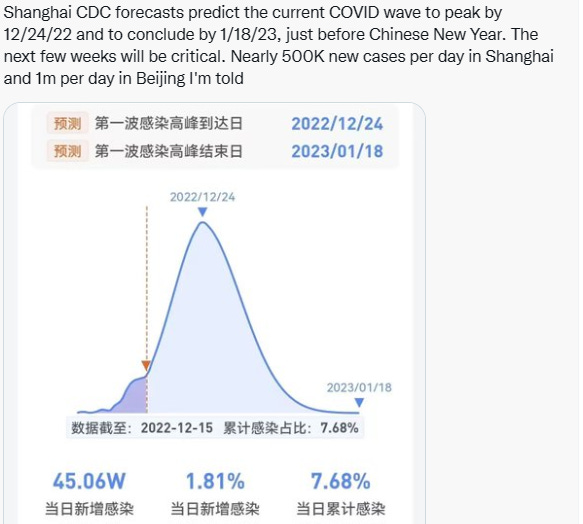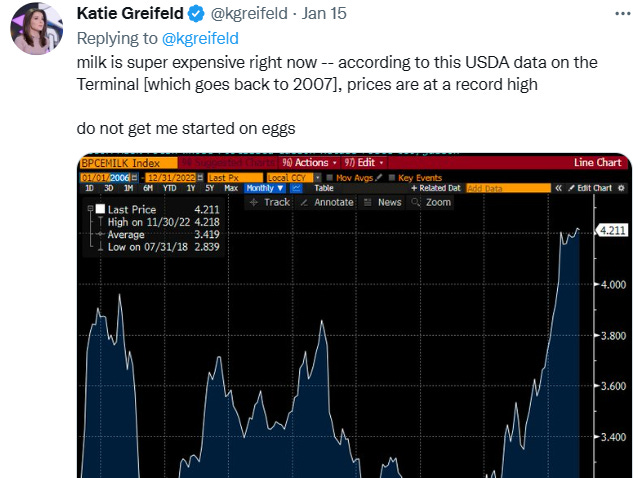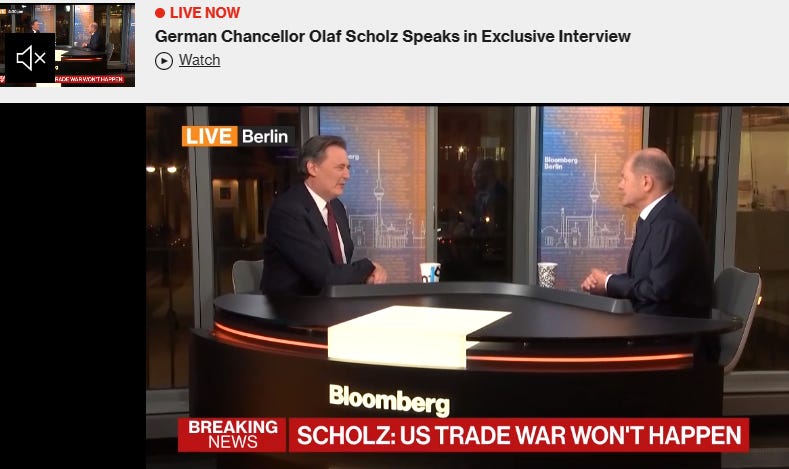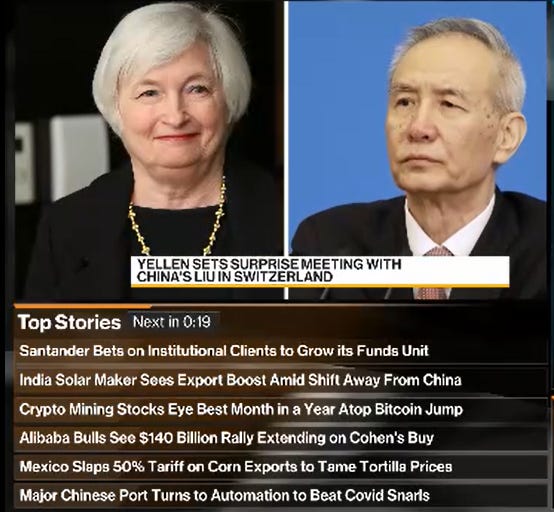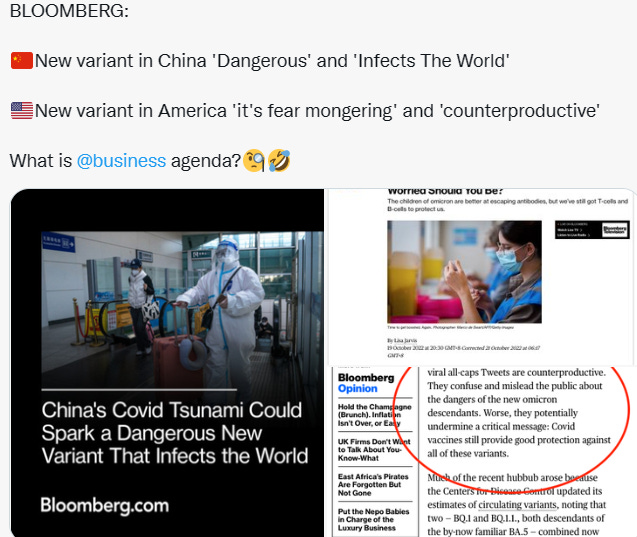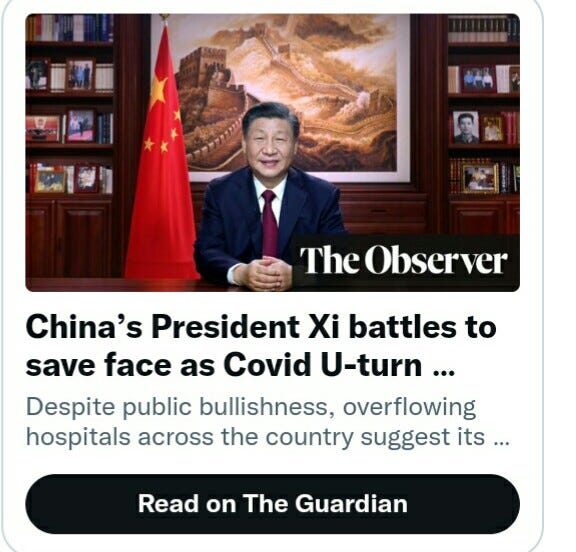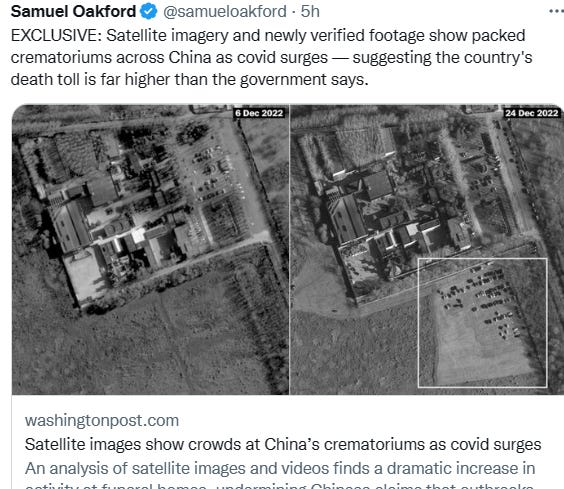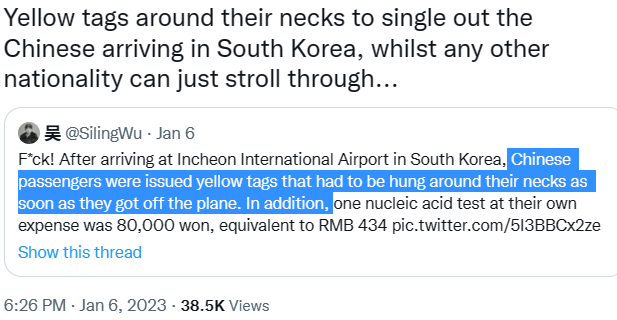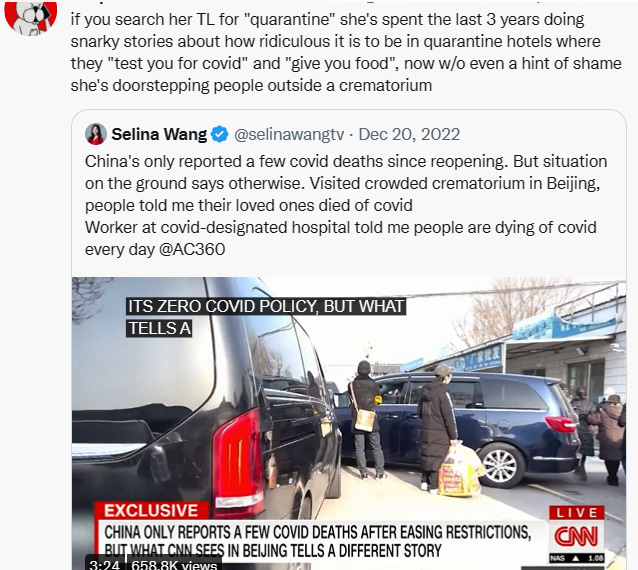The issue here is that the rich countries have been blaming China for failure to reduce debts while studiously ignoring the private lenders from their own countries that are the bigger obstacle, in the wake of Coronavirus COVID-9. Western Media mostly allow themselves to be led around the nose on this.
China’s economy is slowing while India’s expanded by nearly 7 percent (per World Bank predictions.) Can India catch up with China in a medium term scenario?
This is where the devil lies in the fine print. The heart of the matter is that China’s GDP growth of 3 percent translates as a year-on-year expansion of its economy touching a whopping $18 trillion.
To put matters in perspective, China has an economy that is nearly 6 times the size of India’s economy (GDP: $3.5 trillion). (Emphasis added.)
Yet, this is being regarded as a lacklustre economic performance, attributed to headwinds stemming from a combination of adverse circumstances characteristic of 2022 — ranging from the coronavirus and geopolitical tensions to repeated US interest rate hikes and the waning overseas demand due to the world economy tiptoeing toward recession.
Global elites will embrace China’s messaging because China is still perceived to be critical for reinvigorating the neoliberal consensus/globalism. National populism in both China and the West is taking a backseat for now. Making travel plans to go to China is surreal. It's only been 3 years coronavirus, and will enter Years 4th, but feels like every Chinese starting over. Reflecting on all that's happened in China since then, expatriates no idea what to expect once he/she there. Among friends/colleagues, the buzz around China's prospects is incredible. Chinese new-home sales rose more than 20% year-on-year over the three-day New Year holiday starting from Dec. 31, 2022, support policies taking effect and the gradual release of pent-up demand after high COVID-19 cases."
The sporadic outbreaks of Covid in manufacturing bases including Shanghai and South China’s Guangdong Province disrupted production in local factories and logistics, which combined with a property market slump.
To be sure, “Zero-covid” has been a well-documented drag on the Chinese economy over the past year; factories suffered when workers were locked down, and consumers reined in their spending as they lost pay checks and jobs.
Economist Ashoka Mody, whose book argues that the India story is more gloss than substance. In short, this is not going to be the Indian century, because the *real* fundamentals India needs are non-existent. "Best estimate of India’s potential growth", Ashoka predict, is "between 3% and 4%". Worth remembering that despite being 6x smaller, India's economy still grows slower than China's ("relative to 2019, Indian GDP today is just 7.6% larger, compared with 13.1% in China." India has a worsening trade deficit.
Externally, the escalating geopolitical tensions due to the western sanctions against Russia drove up bulk commodity prices, subjecting China to imported inflation pressure. Second, the historical reality is that as the Chinese economy and the US economy grew closer and closer during the decades since 1980, the extent and depth of the Chinese economy affected by the US monetary policy also grew stronger and stronger.
That is to say, the US interest rates and the Chinese economy are inversely related, especially in import, export, and China-US exchange rate. 2022 witnessed extraordinary fluctuations in the US financial market, which was bad news for China.
Nonetheless, China’s 3% GDP growth compares by far favourably with those of the US and Japan — “the peer competitors” — whose GDP grew by less than 2% (per IMF projections.) Analysts expect a much better performance in the year 2023, exceeding 5% in GDP growth. (In comparison, the World Bank estimates that global growth will slow from 2.9 percent in 2022 to 1.7 percent in 2023, and the US’ GDP is expected to increase by just about 0.5 percent in 2023, the weakest forecast in three decades.)
This has geopolitical ramifications, as China is well-placed to make a far more significant contribution to global growth than any other major economic power, which would inevitably translate as increased prestige in the world community and create greater opportunity to leverage foreign policy objectives.
China’s consumer-led rebound to buttress global growth implies that its vast market potential will be seen as a locomotive of growth by other economies, especially in the ASEAN region, Africa and Latin America.
Contrary to doomsday predictions, China’s transition away from the “zero-Covid” policy has been relatively smooth. The new regime aims to cope with the Covid mutants that are highly contagious, but less potent and dangerous. In retrospect, hundreds of thousands of human lives were saved in China, unlike in India or America.
Interestingly, the latest economic data from China also showed that notwithstanding the 3% growth rate last year, the country’s GDP per capita has stayed above the $12,000-mark, which is close to the high-income countries defined by the World Bank.
The European Union does not see eye-to-eye with the United States when it comes to opposing China, the French finance minister Bruno Le Maire (right, in the picture of 5 people) told. The United States has taken a confrontational approach with China particularly when it comes to the technology sector.
Speaking at a panel at the World Economic Forum in Davos, Switzerland, looking at the economic outlook, France’s Bruno Le Maire said: “China cannot be out, China must be in. This is the difference of view we have between the U.S. and Europe.”
“We don’t want to oppose China, we want to engage with China, we want China to obey by the same rules,” he said, “this is our policy.”
Though European officials have said China is a strategic rival, they also recognize they want to develop commercial ties with Beijing and work together against climate change.
France’s President Emmanuel Macron is reportedly planning a trip to China in the coming weeks to discuss energy and trade, as well as the broader consequences of Russia’s invasion of Ukraine.
Data from Europe’s statistics office showed that China was the third-largest partner for EU exports of goods in 2021, and the largest partner for imports.
The U.S. side thinks Europe should stomach IRA as part of a joint push on China. But some key European stakeholders say that getting bullied (their word) by the U.S. on trade is pushing them to protect trade ties with China. A simplification often repeated by DC bubble. Brussels argues IRA is not aimed at China, but against EU + other allies. And it’s not pushing EU to China, but makes US a concern on equal footing with China. DC analysts reduce EU to a mercantilist caricature to fit their world view. Talk of de-globalization and re-shoring away from China has been grossly exaggerated. Trade between the US and China is on track to break records, and many European companies are still reliant on the Chinese market and expanding in the region.
Biden administration (Jan 20th 223 = 2 years administration) protests the word “containment,” but how else to describe an embargo on what the White House itself calls “the foundational technologies of the 21st century”?’ Washington’s DC embrace of a quasi-containment strategy will intensify the downward spiral of U.S.-China relations, making cooperation even harder and increasing the odds of crisis.”
========
(bahasa Indonesia)
Apa yang terjadi di China lebih sureal, aneh dibanding apa yang pernah terjadi di NKRI utamanya Juni-Agustus 2021. Pasca ribuan pemesan via jemari di hp memesan ke driver gojek tuk rebutan merchandise korsel kpop. Dan masif penularan hingga 36 hari berturut wafat di NKRI ga pernah lebih rendah dari seribu (1k).
Ika ga mungkin bohong dengan story-story apapun di IG nya tentang situasi apapun di China. Dan wartawan WSJ yang hanya 4 km dari dia (Beijing Lu) ga mungkin bohong kalau ada deretan (antrian) kremasi warga yang wafat diduga wafat karena covid. Tapi juga penjelasan wartawan Nikkei, setidaknya 12 km dari Ika, bahwa orang2 memang ramai-ramai merayakan tahun baru. Dan sekaligus wartawan Deutsche Welle/DW, 6-7 km dari Ika, melaporkan kalau RS kepenuhan - kelimpungan antrian pasien.
Mereka ga mungkin bohong. Ngapain.
Belum hitung paradoksal bukti foto-foto sesama expatriate di Sanlintun. Di Wulumuqi Road. Di Shenzhen. Di Jiangsu. Di Bund. Di Diplomatic Relations Compound/DRC. Bukti foto ultra kontras: China baik-baik saja v China lebih seram dibanding Racoon City.
Dulu, di Indonesia, meski ya expat ada, tapi ga seaktif di China beritakan ini itu
Masalah di China itu aneh banget: yang beritakan China baik2 saja, ultra rendah kematian, & (nyinyir) kematian covid gila-gilaan di Jepang, Korsel, UK, US itu bukan cuma warga China dengan memakai alfabetical mandarin. Tapi warga Barat beneran, yang bertahun2 di China, bisa bahasa mandarin, bisa nulis mandarin, "common sense' menghargai China, dan beritakan China sebetulnya "ga kenapa-kenapa".
Tapi sama: yang beritakan China chaos, kolaps, ya orang2 Barat juga, yang juga paham berbahasa mandarin, bisa nulis mandarin, dan pakai foto juga "nih lho di krematorium jejer-jejer orang nunggu agar sanak saudaranya dikremasi" ; "nih lho warga sechaos itu di RS nunggu pertolongan" (persis saat RS Sardjito kelimpungan memalukan kebanjiran disaat overload pasien, persis saat RS Fatmawati kelimpungan).




